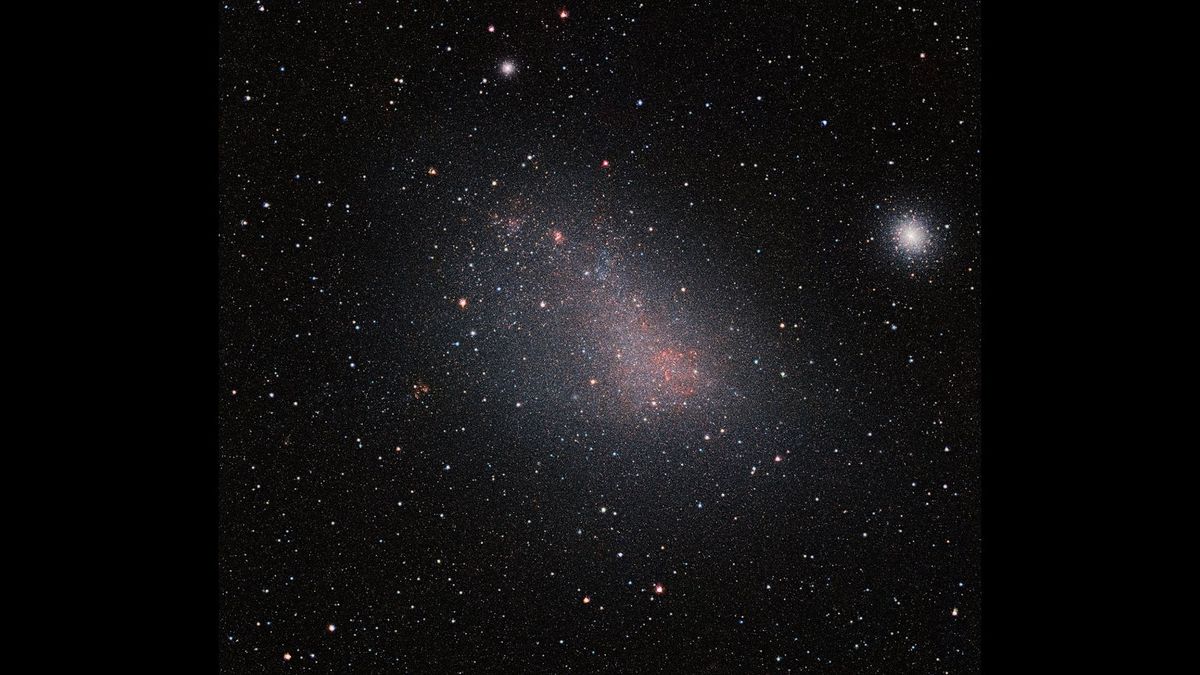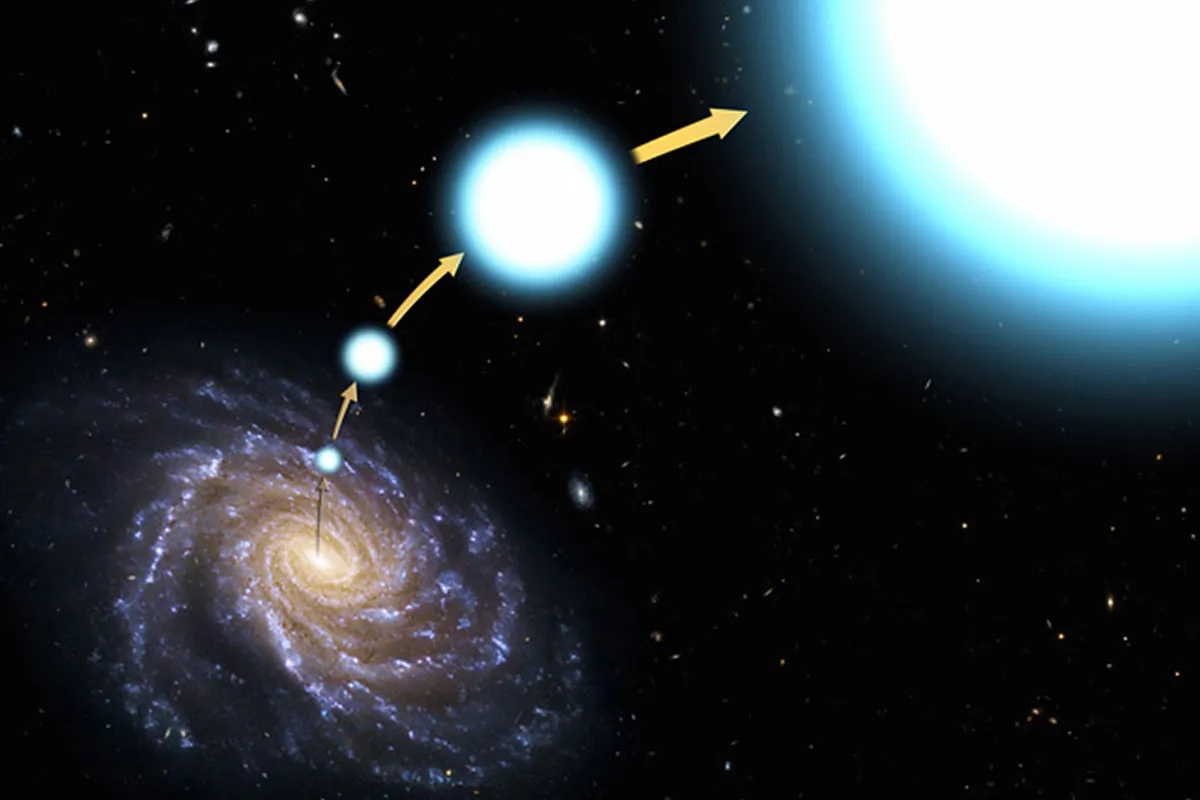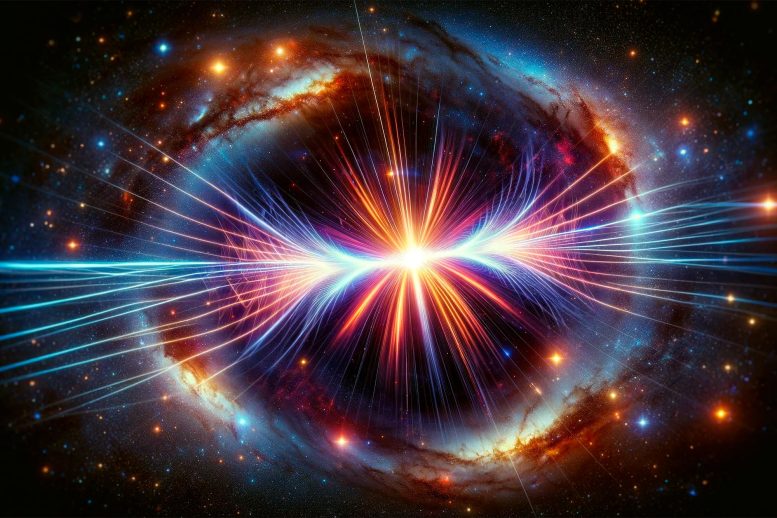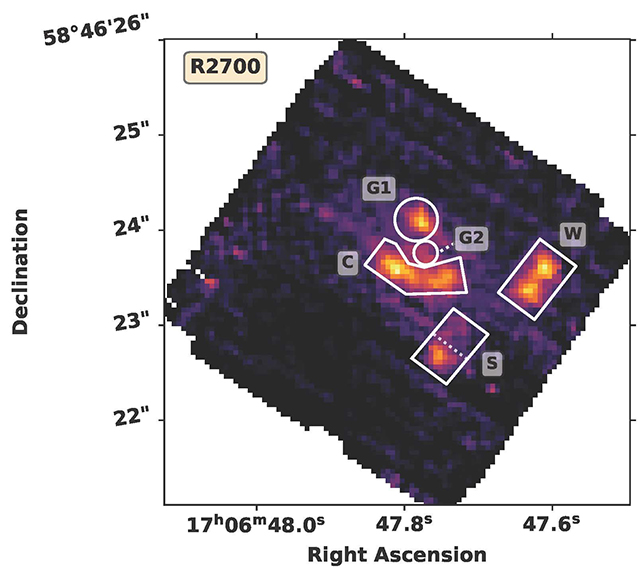-
Space Oddity: Uncovering the Origin of the Universe’s Rare Radio Circles

Newswise — It’s not every day astronomers say, “What is that?” After all, most observed astronomical phenomena are known: stars, planets, black holes and galaxies. But in 2019 the newly completed ASKAP (Australian Square Kilometer Array Pathfinder) telescope picked up something no one had ever seen before: radio wave circles so large they contained entire…
-
One of the closest galaxies to the Milky Way is hiding a second galaxy behind it, new research reveals

The Small Magellanic Cloud is a nearby galaxy that is very familiar to astronomers — or so they thought. New research suggests that the satellite galaxy of the Milky Way, located around 199,000 light-years from Earth, seems to have been hiding a secret: It’s actually two galaxies, one behind the other. To make the discovery,…
-
Do rogue stars roam in between galaxies?

Could there be individual rogue stars out there in the cosmos, roaming the space between galaxies? Those of us who are interested in space and astronomy most likely have firm grasp on the build-up of the Universe. Moons orbit planets, planets orbit stars, and stars are accumulated in massive cosmic structures known as galaxies. Simple,…
-
How To Read The Night Sky: The Best New Books On Space For 2024
The night sky is the most exciting, precious and threatened resource we humans have. Since it’s always been central to the human experience of the world, it offers a rich vein for writers, but most books on the subject utterly lack emotion. Not so these three highly original titles hitting the shelves in 2024, which…
-
Astronomical Mystery: Strange Radio Signal Detected From Outside the Milky Way

Astronomers have discovered unique patterns in a repeating Fast Radio Burst (FRB 20220912A), observed by the SETI Institute. This finding, described in the Monthly Notices of the Royal Astronomical Society, challenges existing models of FRBs, which are intense, short-lived radio signals from space. Credit: SciTechDaily.com New research reveals a never-before-seen behavior in a repeating Fast…
-
Oversized Ancient Galaxy Isn’t What Astronomers First Thought

The early Universe was a wild time. In the first 2 billion years following the Big Bang 13.8 billion years ago, star formation positively roiled, and galaxies flared to life in the darkness, collided, and grew. Interpreting the light that has traveled so far across space and time can be difficult, and we don’t always…
-
Behold–the Best Space Images of 2023
The year 2023, like every other one before it—and, no doubt, every year to come—has had its crests of good news and its troughs of bad tidings. But one constant, reliable source of awe and beauty is the sky over our head. After journeys of mere seconds to billions of years, the light from astronomical…
-
Meet Taters, the cat who starred in the video streamed from space
Taters, NASA’s Laser Beam Motion Analyst. Credit: Joby Harris/Instagram via taters_space_cat Taters, a 3-year-old orange tabby cat, is having his 15 seconds of fame. The world met Taters after NASA used a laser to stream a test video of the feline 19 million miles from the Psyche spacecraft to Earth on Dec. 11. The footage,…
-
All Astronomical Events 2024: Detailed Stargazing Calendar
Get ready to observe the sky in 2024! Our comprehensive list of all the year’s astronomical events will ensure you don’t miss a single celestial spectacle. Contents To stay updated with celestial events, check the astronomical calendars in the Star Walk 2 and Sky Tonight stargazing apps. There, you can find the exact date and…
-
What are the hazards of living in space? Swollen heads, for one
NASA astronaut Christina Koch stops for a picture while replacing equipment on the International Space Station. Credit: NASA Recently there has been a surge in commercial spaceflight. So, while regular human spaceflights beyond low-Earth orbit are still far off on the horizon, they appear to becoming an inevitability in the coming decades. To prepare for…